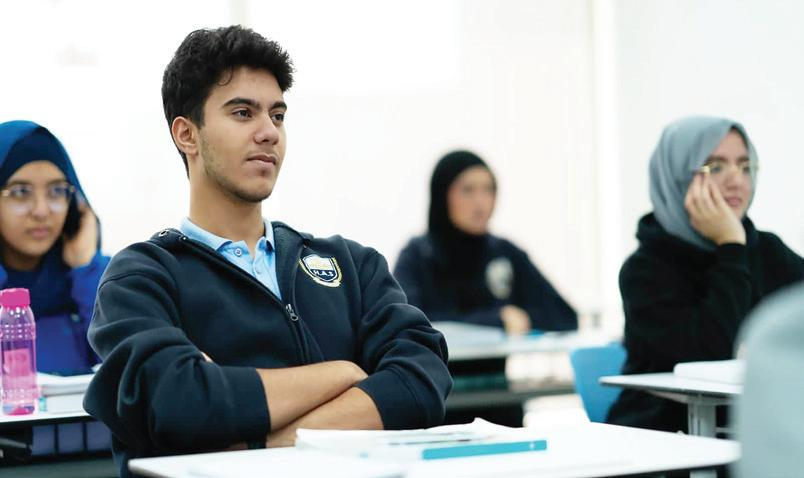Rising student dropout rates in Qatar’s private education sector are causing serious concern in 2025. Education experts, school administrators, and parents are all witnessing a worrying trend—more students than ever before are leaving school before completing their education. This development is raising questions about the stability and future of the private education system in the country.
According to a recent report released by the Qatar Education Authority, dropout rates in private schools have increased by nearly 18% compared to last year. This figure has sparked urgent discussions among policymakers and academic institutions.
Why Are Students Dropping Out?

Several reasons are behind the growing dropout crisis in Qatar’s private schools. Experts have identified economic pressure as one of the primary drivers. Many families are struggling to keep up with rising tuition fees. Although private schools are known for high-quality education, the increasing cost is becoming unbearable for middle-income households.
Dr. Leila Hassan, an education researcher based in Doha, explains:
“Parents are forced to prioritize household expenses. With inflation rising and job uncertainty in many industries, families are making tough choices. For some, that means pulling their children out of expensive private schools.”
Another major reason is academic stress. Many private institutions focus heavily on academic excellence, leading to pressure and mental health issues among students. When students cannot cope with expectations, dropping out becomes a real possibility.
In addition, curriculum mismatch plays a role. Several international schools follow foreign systems, which may not align with the learning style or pace of local students. When students find it hard to adjust, they often lose interest in continuing their education.
The Economic Burden on Families
The rising cost of private education is hitting families hard. Many parents had to take loans or cut down on other essentials just to afford school fees. In 2025, fee hikes in over 40% of Qatar’s private schools made matters worse.
Fatima Ahmed, a parent whose son recently dropped out of a private institution, shared:
“We enrolled our child thinking it would secure his future. But every term, fees increased. We just couldn’t manage anymore.”
Experts believe that unless tuition costs are regulated or subsidized, this trend could continue to rise.
Impact on Students’ Futures
Rising student dropout rates in Qatar’s private education sector do not just affect schools and families—it has a long-term effect on the nation’s youth. Students who leave school early are more likely to face unemployment, low income, and social marginalization.
Education consultant Khalid Al-Sulaiti says:
“Education is more than just passing exams. It’s about building skills, confidence, and purpose. When students drop out, we risk losing a generation of potential leaders.”
A high dropout rate can also weaken the country’s knowledge-based economy goals. Qatar has long been investing in education as a path to future development. However, these dropout numbers suggest that private institutions are not yet fully equipped to handle modern challenges.
What Are Schools Doing About It?
Many schools are now trying to respond to the crisis. Some are offering flexible payment plans, while others are introducing mental health support programs and academic counseling. A few have begun adjusting curricula to include more local context and student-friendly teaching methods.
One principal from a popular Doha school revealed that they have reduced homework loads and increased extracurricular engagement to help students cope. However, not all schools are making these changes fast enough.
“Schools must shift from profit-centered models to student-centered models,” said education analyst Amina Rashed. “Only then can we start reversing the dropout numbers.”
Government’s Response

The Ministry of Education has acknowledged the rise in dropout rates and announced plans to investigate and monitor private schools more closely. A new regulation might be introduced later this year to cap tuition increases and enforce student welfare standards.
In addition, the government is considering partial funding or voucher programs to help families who cannot afford private education but do not have access to public schools.
Still, critics argue that these steps are not enough. They say a deeper reform of the private education system is required—one that addresses both affordability and the learning environment.
The Role of Parents
While schools and the government play their part, parents also need to be aware of their children’s emotional and academic health. Communication between parents and children is key. Experts recommend that parents regularly check in with their children and maintain a supportive attitude instead of adding pressure.
Sociologist Dr. Nasser Al-Mansoori emphasized:
“Parents must look beyond marks and understand their child’s mental well-being. Many dropouts happen not because of failure, but because children feel unseen or unheard.”
Possible Solutions
Here are some expert suggestions to address the growing dropout problem in Qatar’s private education sector:
- Fee Regulation: Set limits on how much schools can raise fees yearly.
- Government Subsidies: Offer education vouchers for low- and middle-income families.
- Mental Health Support: Provide trained counselors in every private school.
- Flexible Learning Options: Introduce part-time or hybrid learning models.
- Local Curriculum Balance: Blend international standards with local relevance to improve student engagement.
- Parental Involvement Programs: Encourage stronger parent-school partnerships.
What the Future Holds
If immediate action is not taken, Qatar’s private education system may face deeper challenges. But with the right strategies and a united approach among schools, government, and families, the country can still turn this crisis into an opportunity for transformation.
Rising student dropout rates in Qatar’s private education sector should be viewed as a wake-up call. The current education structure needs to evolve with the times, ensuring that students are not only educated but also supported.
As Qatar continues its journey toward Vision 2030, prioritizing youth education must remain a central goal. After all, today’s students are tomorrow’s nation-builders.
Also Read – Qatar’s Smart Education Policy Aims for Full AI Integration by 2030



